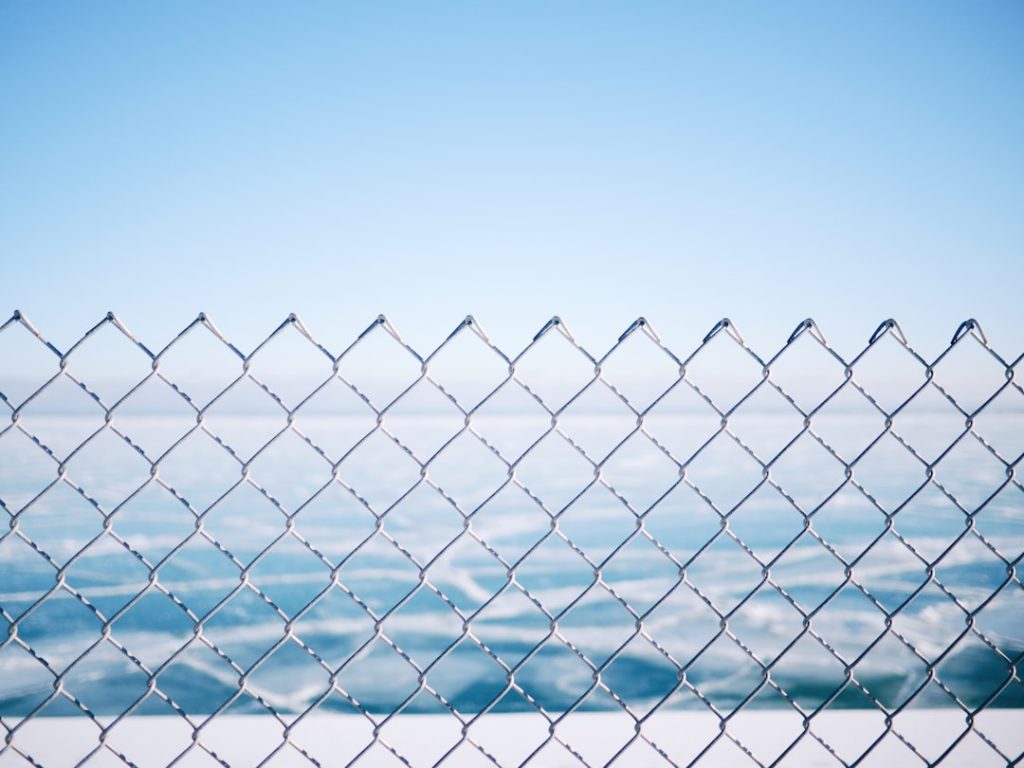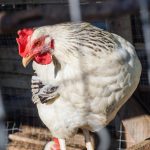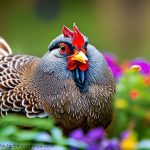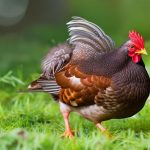Determining the appropriate fence height for a chicken enclosure requires consideration of multiple factors. The size and breed of chickens are primary considerations, as larger breeds like Orpingtons or Brahmas typically need taller fences to prevent escape, while smaller breeds such as bantams may be contained by lower fences. The age of the chickens is also relevant, as younger birds tend to be more agile and capable of higher flight than older, heavier individuals.
Local predator populations significantly influence fence height requirements. Areas with high numbers of foxes, raccoons, or hawks necessitate taller, more secure fencing to protect the flock. The property’s layout and proximity to neighboring properties are additional factors to consider.
If neighboring pets or wildlife pose a threat to the chickens, taller fencing may be necessary to ensure both protection and privacy for the flock.
Table of Contents
- 1 The Importance of Predator Prevention in Determining Fence Height
- 2 Different Types of Fencing and Their Suitability for Chicken Enclosures
- 3 How to Determine the Optimal Height for Chicken Fencing
- 4 Tips for Installing and Maintaining High Fences for Chicken Enclosures
- 5 Common Mistakes to Avoid When Choosing Fence Height for Chickens
- 6 The Role of Roosting and Perching Areas in Chicken Enclosures and Their Impact on Fence Height
- 7 FAQs
Key Takeaways
- Consider the size and breed of your chickens when choosing fence height to prevent them from flying over or predators from reaching them.
- Predator prevention is a crucial factor in determining fence height, as taller fences can deter climbing predators and protect chickens from attacks.
- Different types of fencing, such as wire mesh, electric, or wooden, have varying levels of suitability for chicken enclosures based on their effectiveness in keeping predators out.
- The optimal height for chicken fencing can be determined by assessing the potential threats in the area and considering the chickens’ behavior and ability to fly.
- When installing and maintaining high fences for chicken enclosures, ensure that the fencing is secure, regularly inspect for damage, and trim any nearby vegetation that could aid predators in accessing the enclosure.
The Importance of Predator Prevention in Determining Fence Height
Understanding Predator Behavior
When choosing the height of your fence, it’s essential to consider the specific predators in your area and their typical hunting behaviors. This knowledge will help you design a fence that effectively keeps them at bay.
Fence Height and Design Considerations
For instance, if you live in an area with a high population of ground-dwelling predators like foxes or raccoons, a fence that is at least 6 feet tall may be necessary to prevent them from climbing or jumping over. Moreover, the design and construction of the fence are critical considerations for predator prevention. A solid, sturdy fence that is buried at least a foot into the ground can help prevent predators from digging under the fence to gain access to your chickens.
Additional Security Measures
Furthermore, adding a wire mesh or electric fencing to the top of the fence can further deter predators from attempting to breach the enclosure. By carefully considering the specific predators in your area and taking steps to prevent their access to your flock, you can help ensure the safety and security of your chickens.
Different Types of Fencing and Their Suitability for Chicken Enclosures
There are several different types of fencing that can be used for chicken enclosures, each with its own advantages and disadvantages. One popular option is chicken wire, which is a lightweight and affordable option that provides good visibility and ventilation for your chickens. However, chicken wire may not be the most effective option for predator prevention, as it can be easily damaged or breached by determined predators.
Hardware cloth is another popular choice for chicken enclosures, as it is more durable and resistant to damage from predators. Chain link fencing is another option that provides good visibility and durability, but may not be as effective at preventing smaller predators from gaining access to your flock. Electric fencing is a highly effective option for predator prevention, as it delivers a mild shock to any animal that comes into contact with it.
However, electric fencing can be expensive to install and may require regular maintenance to ensure its effectiveness. Ultimately, the best type of fencing for your chicken enclosure will depend on your specific needs and budget, as well as the predators in your area.
How to Determine the Optimal Height for Chicken Fencing
Determining the optimal height for your chicken fencing will depend on a variety of factors, including the size and breed of your chickens, the presence of predators in your area, and the layout of your property. As a general rule of thumb, a fence that is at least 6 feet tall is recommended for most chicken enclosures, as this height will effectively deter most predators from gaining access to your flock. However, if you have particularly large or agile chickens, or if you live in an area with a high population of predators, you may need to consider a taller fence.
To determine the optimal height for your chicken fencing, it’s important to carefully assess the specific threats to your flock and take steps to prevent them from gaining access. This may involve consulting with local wildlife experts or experienced chicken keepers in your area to get a better understanding of the specific predators you need to protect against. Additionally, observing the behavior of your chickens and any potential threats in your area can help you make an informed decision about the height of your fence.
Tips for Installing and Maintaining High Fences for Chicken Enclosures
Once you’ve determined the optimal height for your chicken fencing, it’s important to take steps to ensure that it is properly installed and maintained. When installing a high fence for your chicken enclosure, it’s important to use sturdy materials and construction techniques that will withstand the elements and potential predator attacks. This may involve burying the bottom of the fence at least a foot into the ground to prevent predators from digging under it, as well as adding additional reinforcement at vulnerable points such as corners or gates.
Regular maintenance is also important for ensuring the effectiveness of your chicken fencing. This may involve regularly inspecting the fence for signs of damage or wear, and making any necessary repairs or adjustments as needed. Additionally, keeping vegetation trimmed around the perimeter of the enclosure can help prevent predators from using it as cover to gain access to your flock.
By taking these steps to properly install and maintain your high chicken fencing, you can help ensure the safety and security of your flock.
Common Mistakes to Avoid When Choosing Fence Height for Chickens

Don’t Underestimate Predators
One common mistake is underestimating the jumping or climbing abilities of predators in your area. Even if you think a 4-foot fence will be sufficient to keep out predators, it’s essential to carefully consider the specific threats in your area and choose a height that will effectively deter them.
Secure the Bottom of the Fence
Another common mistake is failing to properly secure the bottom of the fence to prevent predators from digging under it. If the bottom of your fence is not securely anchored into the ground, predators may be able to easily gain access to your flock by digging underneath it.
Regular Maintenance is Key
Additionally, failing to regularly inspect and maintain your chicken fencing can lead to vulnerabilities that predators can exploit. By avoiding these common mistakes and carefully considering the specific threats in your area, you can choose an appropriate height for your chicken fencing that will effectively protect your flock.
The Role of Roosting and Perching Areas in Chicken Enclosures and Their Impact on Fence Height
Roosting and perching areas play an important role in chicken enclosures and can have an impact on the height of your fence. Chickens naturally prefer to roost off the ground at night, as this helps keep them safe from ground-dwelling predators. Providing adequate roosting and perching areas within your enclosure can help reduce the likelihood that your chickens will attempt to fly over or escape from the enclosure.
When designing your chicken enclosure, it’s important to consider the placement and design of roosting and perching areas in relation to the height of your fence. By providing ample roosting space within the enclosure, you can help ensure that your chickens are content and less likely to attempt to escape over the fence. Additionally, providing roosting areas that are higher than the surrounding fence can help discourage chickens from attempting to fly over it.
In conclusion, choosing the right height for your chicken fencing is an important consideration for protecting your flock from predators and ensuring their safety and security. By carefully considering factors such as predator prevention, types of fencing, optimal height determination, installation tips, common mistakes to avoid, and roosting areas within chicken enclosures, you can make an informed decision about the height of your fence that will effectively protect your flock.
If you’re considering building a high fence to keep your chickens in, you may also be interested in learning about whether guinea fowl can live with chickens. Poultry Wizard has an informative article on this topic that you can read here. It’s important to consider the compatibility of different poultry species when planning your coop and fencing setup.
FAQs
What height should a fence be to keep chickens in?
The recommended height for a fence to keep chickens in is at least 6 feet tall. This will prevent most chicken breeds from flying over the fence.
What type of fencing is best for keeping chickens in?
A sturdy wire mesh or hardware cloth is the best type of fencing for keeping chickens in. It should have small enough gaps to prevent chickens from squeezing through or getting their heads stuck.
Do I need to bury the fence to keep chickens from digging under it?
It is recommended to bury the fence at least 12 inches into the ground to prevent chickens from digging under it. This will also help keep predators from digging their way into the chicken coop.
Are there any other measures I should take to keep chickens in with a fence?
In addition to a tall and secure fence, it’s important to regularly inspect and maintain the fence to ensure there are no weak spots or areas where chickens could escape. Adding a roof or netting over the chicken yard can also prevent chickens from flying over the fence.
Meet Walter, the feathered-friend fanatic of Florida! Nestled in the sunshine state, Walter struts through life with his feathered companions, clucking his way to happiness. With a coop that’s fancier than a five-star hotel, he’s the Don Juan of the chicken world. When he’s not teaching his hens to do the cha-cha, you’ll find him in a heated debate with his prized rooster, Sir Clucks-a-Lot. Walter’s poultry passion is no yolk; he’s the sunny-side-up guy you never knew you needed in your flock of friends!







